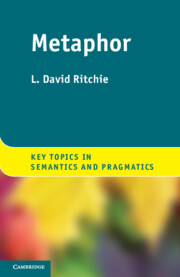Book contents
- Frontmatter
- Contents
- Figures
- Acknowledgments
- 1 Introduction
- 2 Understanding metaphors
- 3 Categorization and relevance
- 4 Conceptual metaphors
- 5 Perceptual simulation
- 6 Metaphors and framing effects
- 7 Language play
- 8 Metaphors in conversation
- 9 Metaphors in politics
- 10 Metaphors in literature
- 11 Closing reflections
- Glossary
- Bibliography
- Index
2 - Understanding metaphors
Substitution and property attribution theories
Published online by Cambridge University Press: 05 February 2013
- Frontmatter
- Contents
- Figures
- Acknowledgments
- 1 Introduction
- 2 Understanding metaphors
- 3 Categorization and relevance
- 4 Conceptual metaphors
- 5 Perceptual simulation
- 6 Metaphors and framing effects
- 7 Language play
- 8 Metaphors in conversation
- 9 Metaphors in politics
- 10 Metaphors in literature
- 11 Closing reflections
- Glossary
- Bibliography
- Index
Summary
In a conversation among scientists about communicating with the public (Ritchie and Schell, 2009), a participant remarked, “if we were better communicators we’d be swimming in money.” We all might suppose that if we were better communicators – or better investors or less addicted to the January clearance sales – we would be “swimming in money.” Fans of Disney Comics may recall an image of “Uncle Scrooge” in his cubic-block-sized money bin, but even for comic book fans, “swimming in money” is readily identifiable as a metaphor, and the comic book money bin brings the metaphor humorously to life. But what does it mean to be “swimming in money”? How do we make sense of metaphors like this?
SUBSTITUTION, COMPARISON, AND PROPERTY ATTRIBUTION THEORIES
This chapter will begin with theories that focus on the lexical meanings, the “dictionary definitions” of the words used as topic and vehicle of a metaphor. These approaches begin with the assumption that a metaphor compares the topic to the vehicle by some attribute they hold in common, or that a metaphor simply substitutes a fancier word for a more common word and thereby ‘dresses up’ a sentence. Most of the examples discussed by advocates of these approaches are nominative metaphors such as ‘Achilles is a lion,’ in which both topic and vehicle are nouns. In order to convert the scientist’s metaphor to a nominative metaphor we must first identify the topic, which might be something like ‘having great wealth.’ Thus we get the nominative metaphor ‘having great wealth is swimming in money.’
Information
- Type
- Chapter
- Information
- Metaphor , pp. 25 - 42Publisher: Cambridge University PressPrint publication year: 2013
